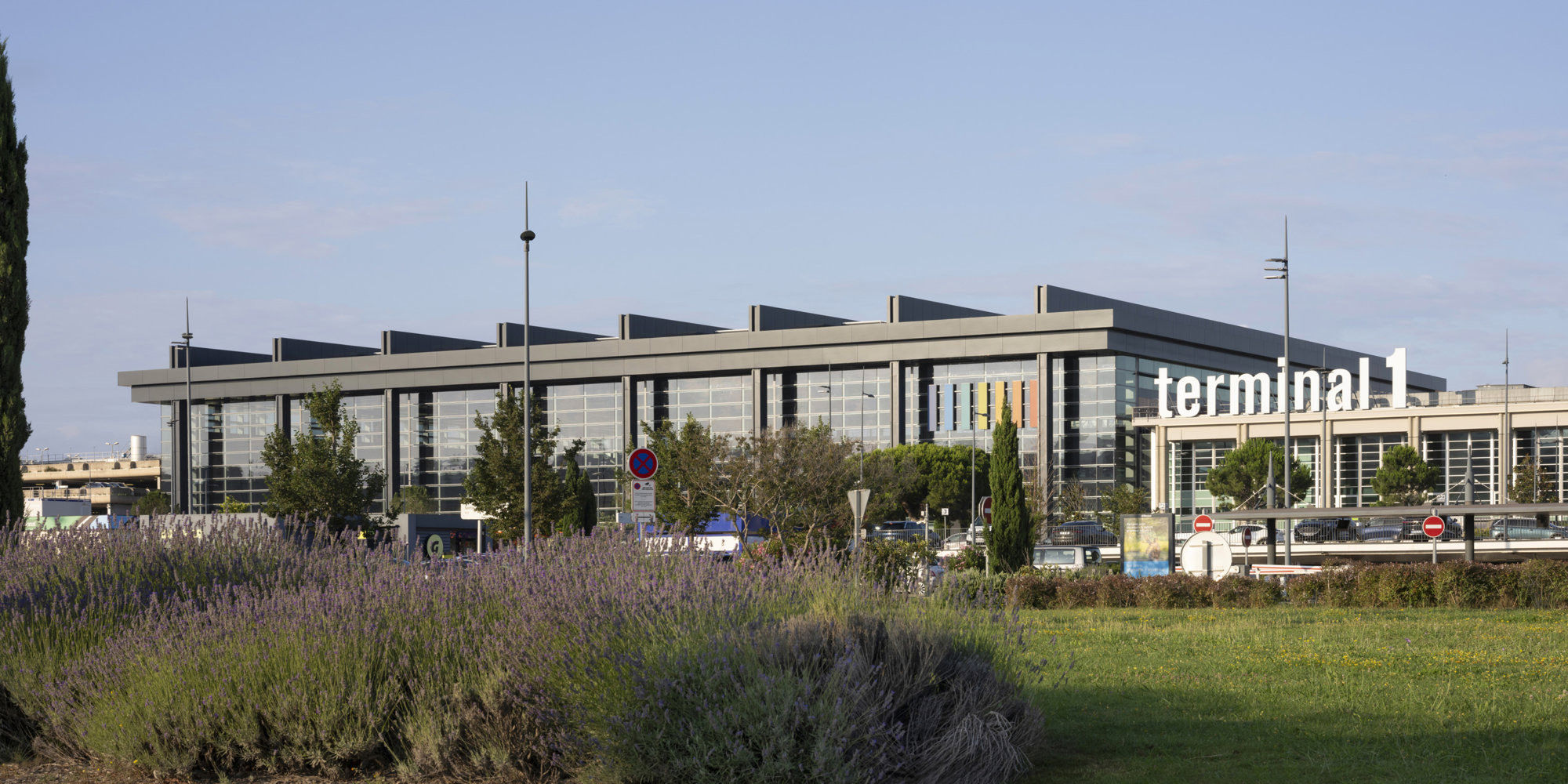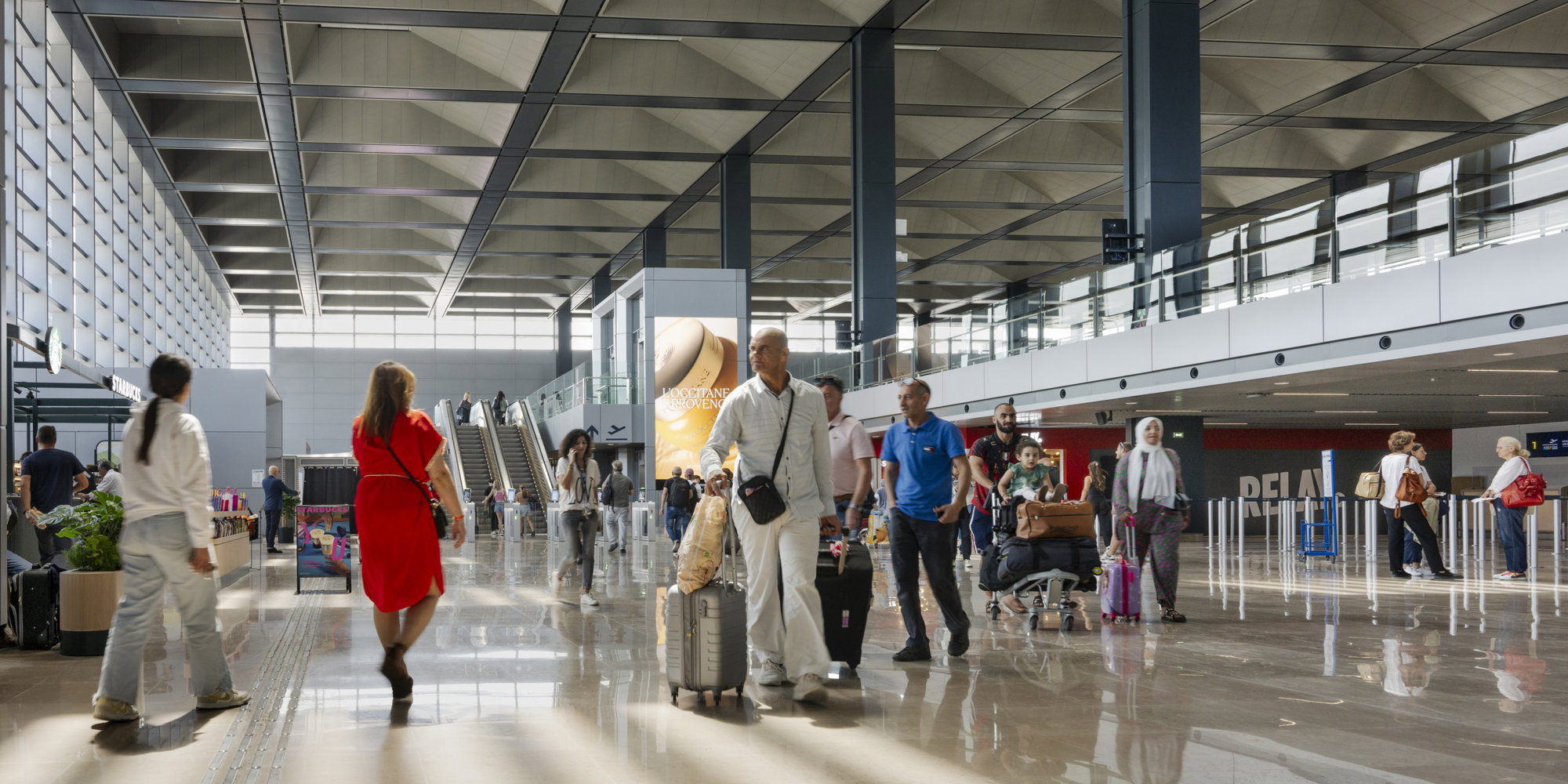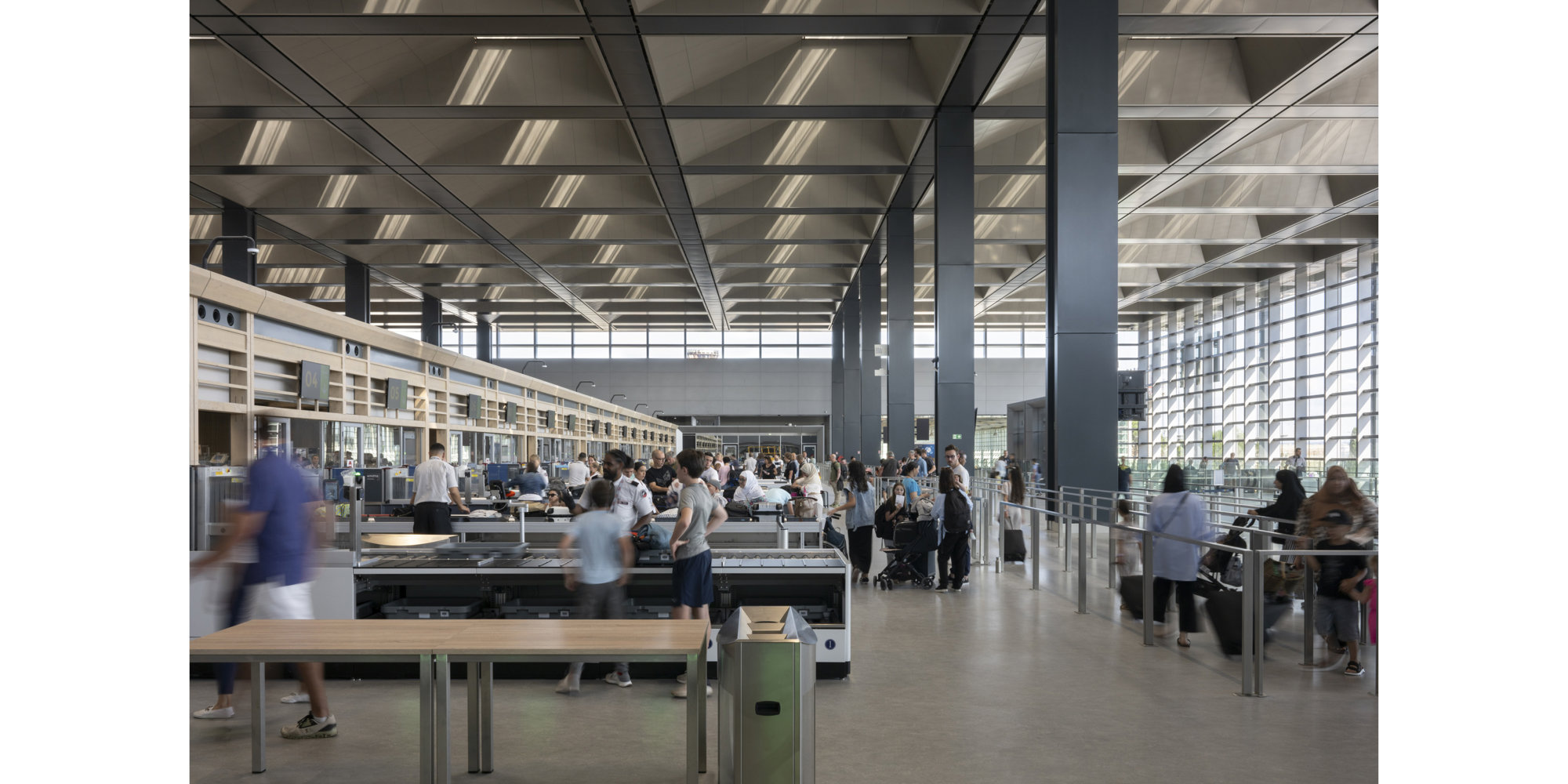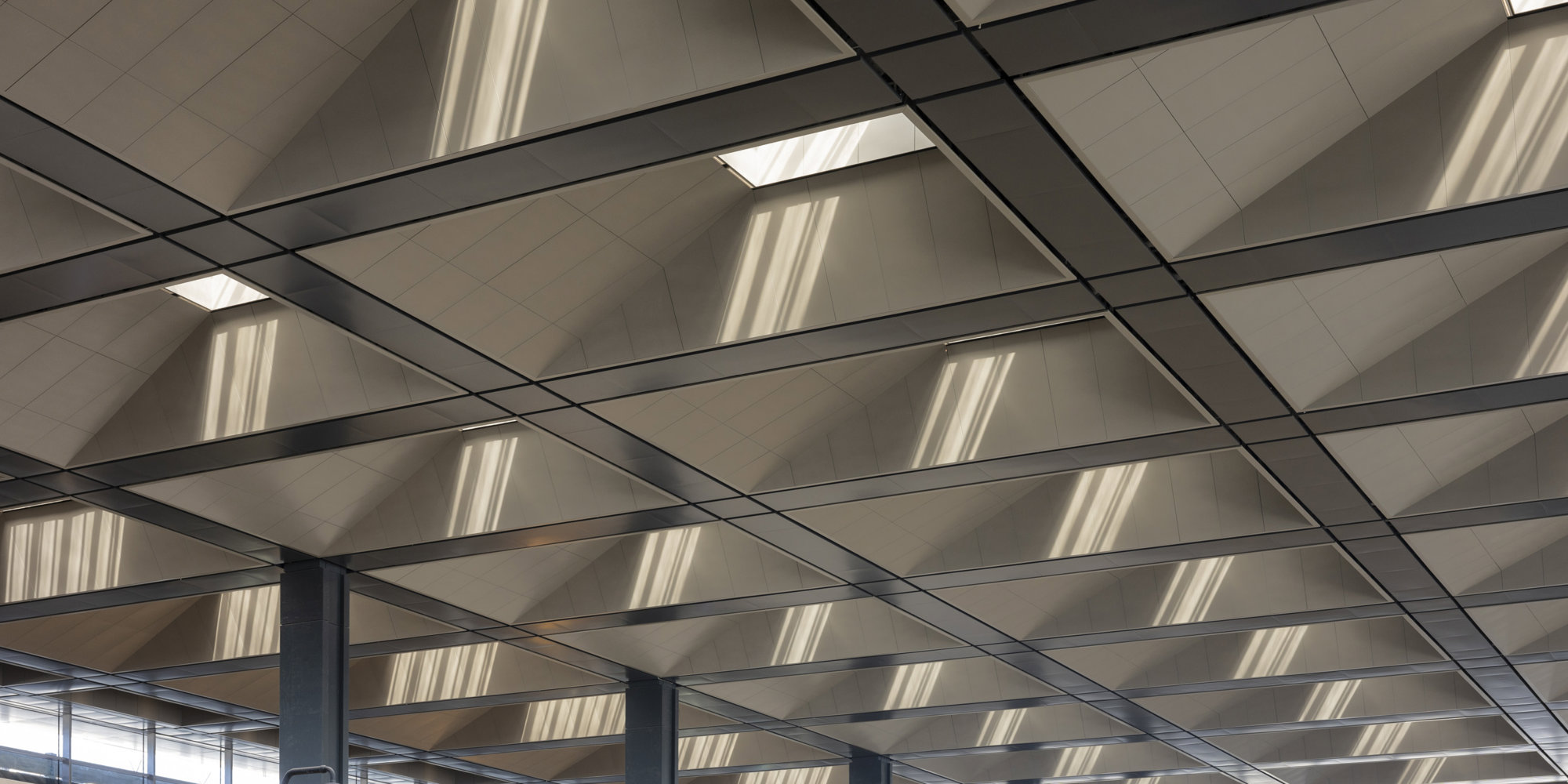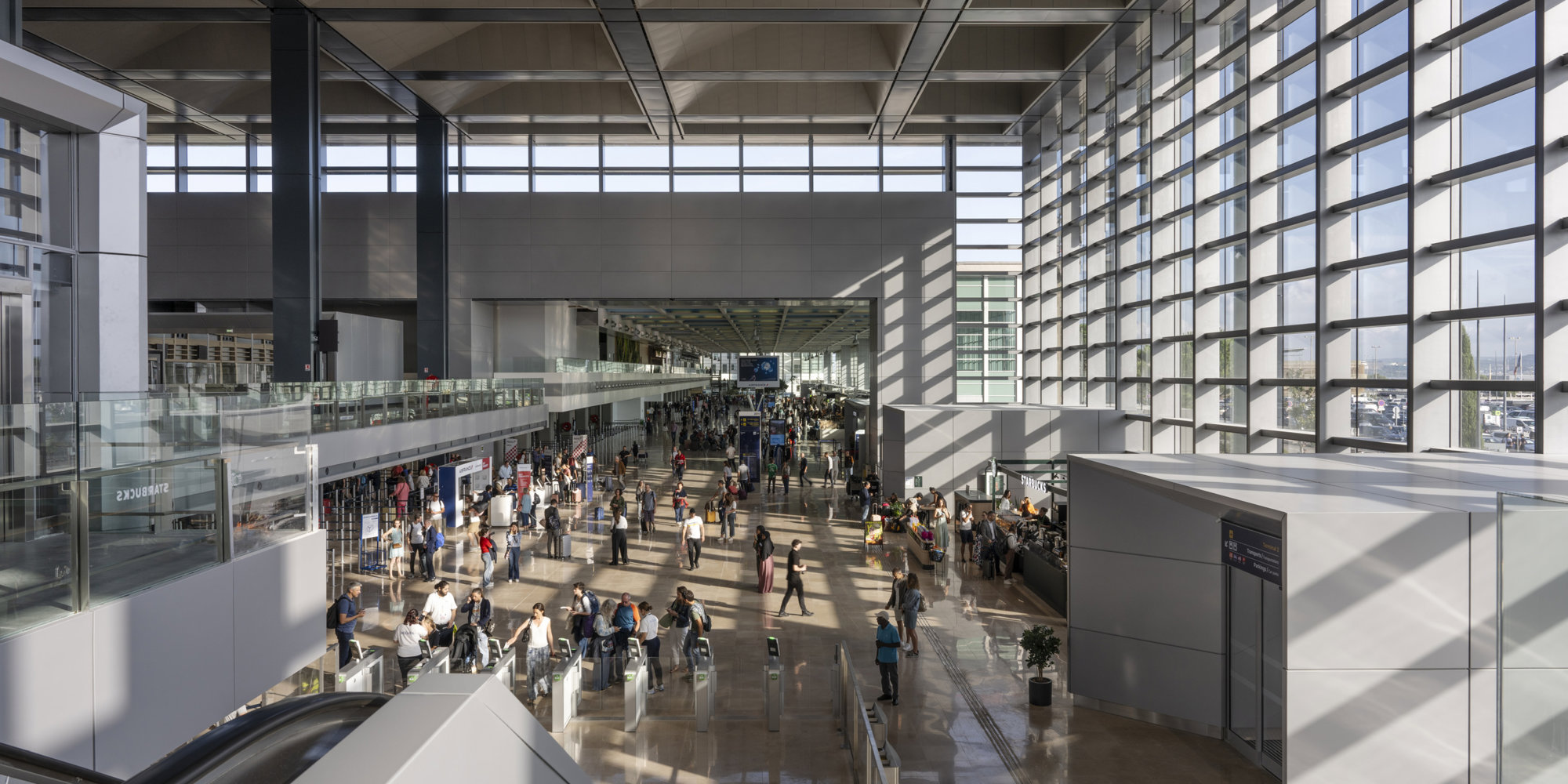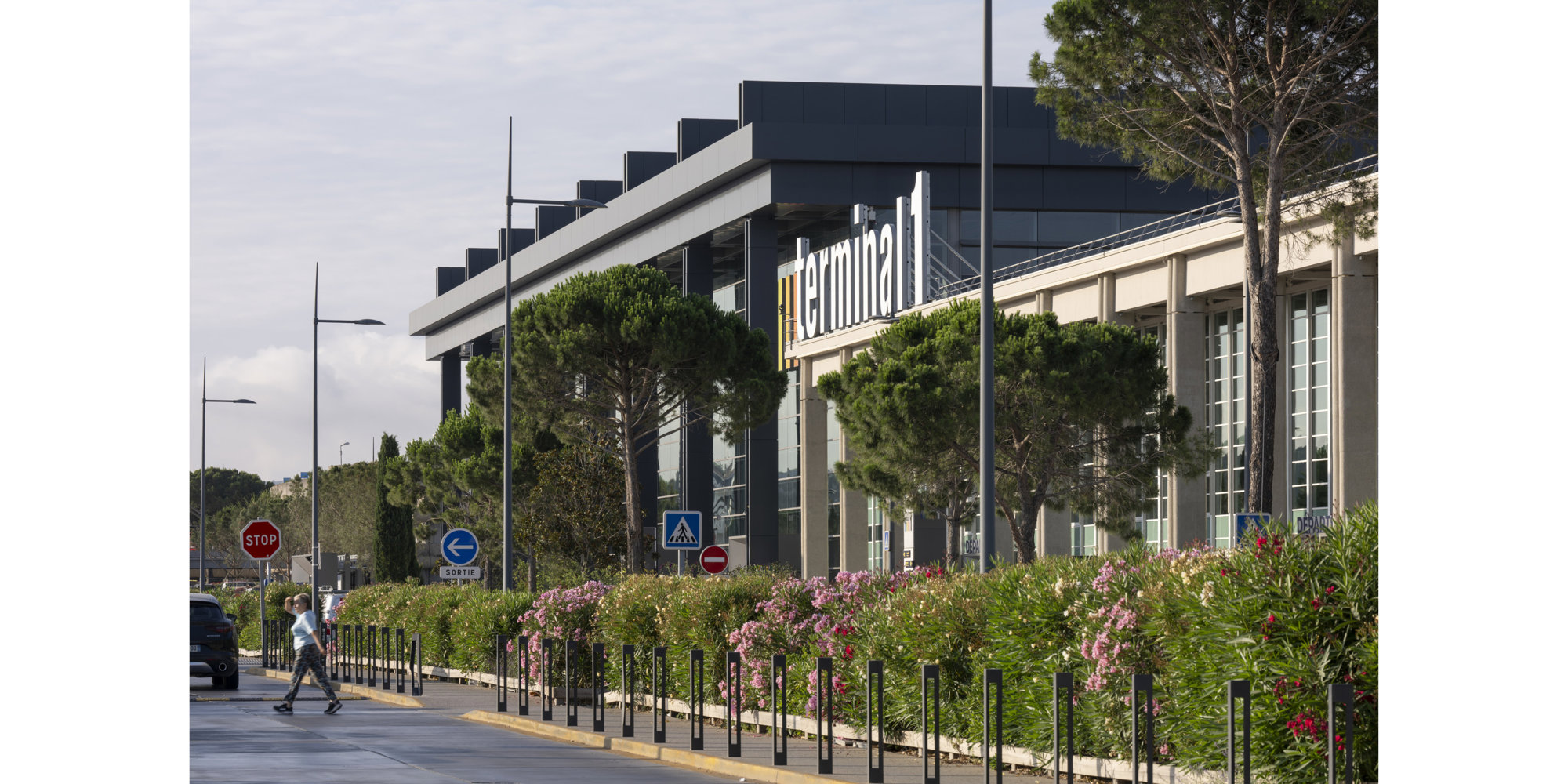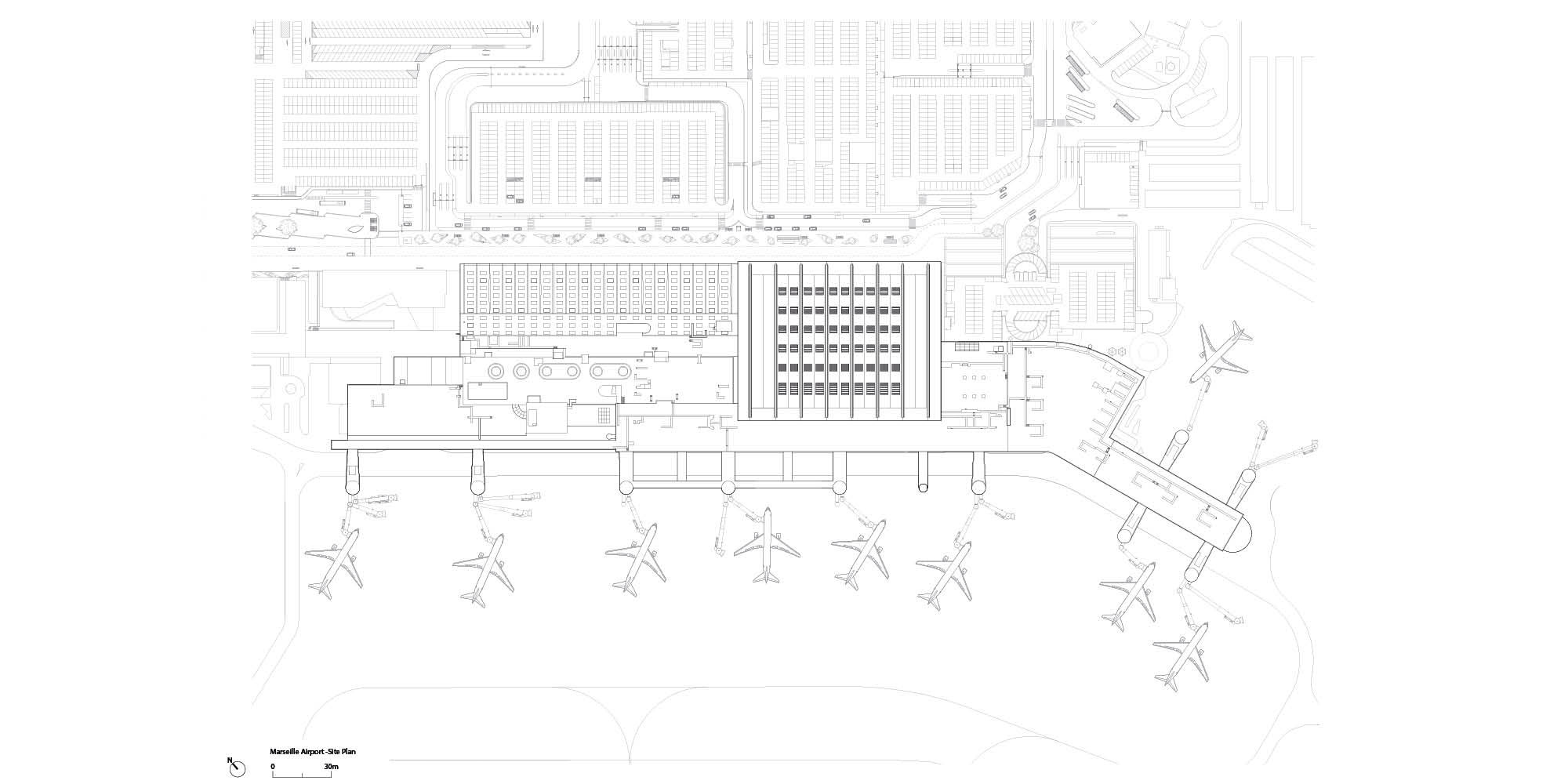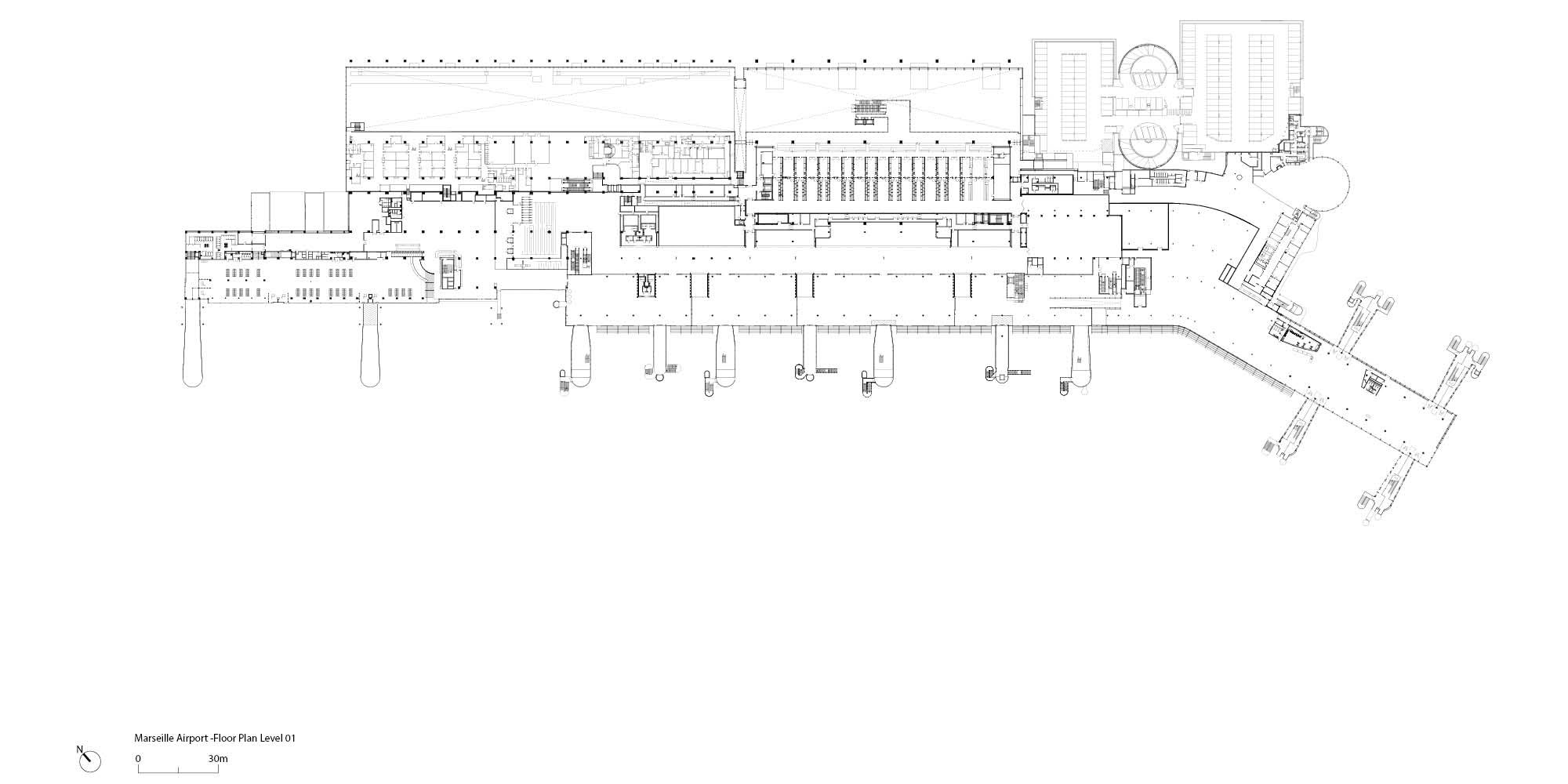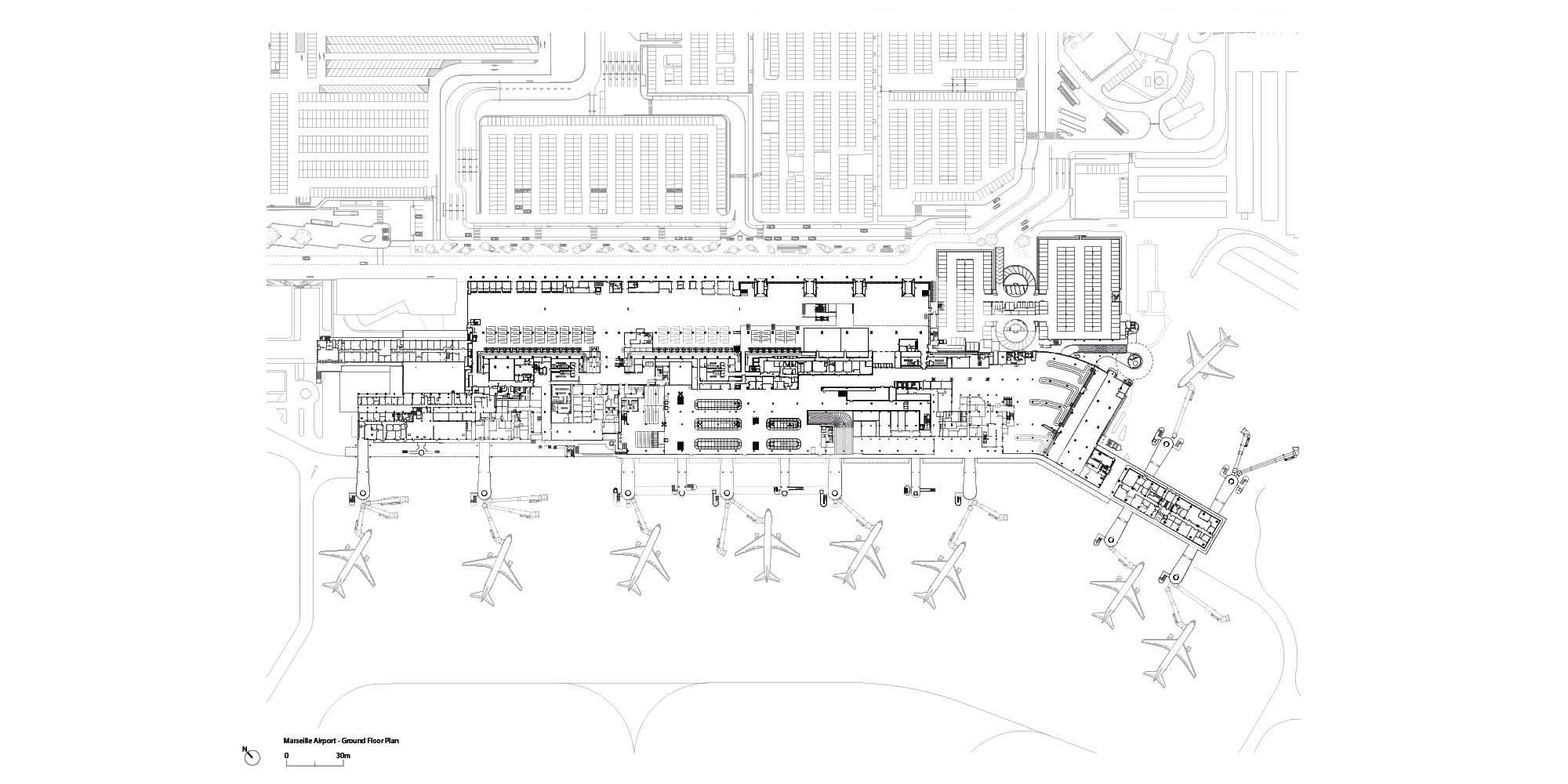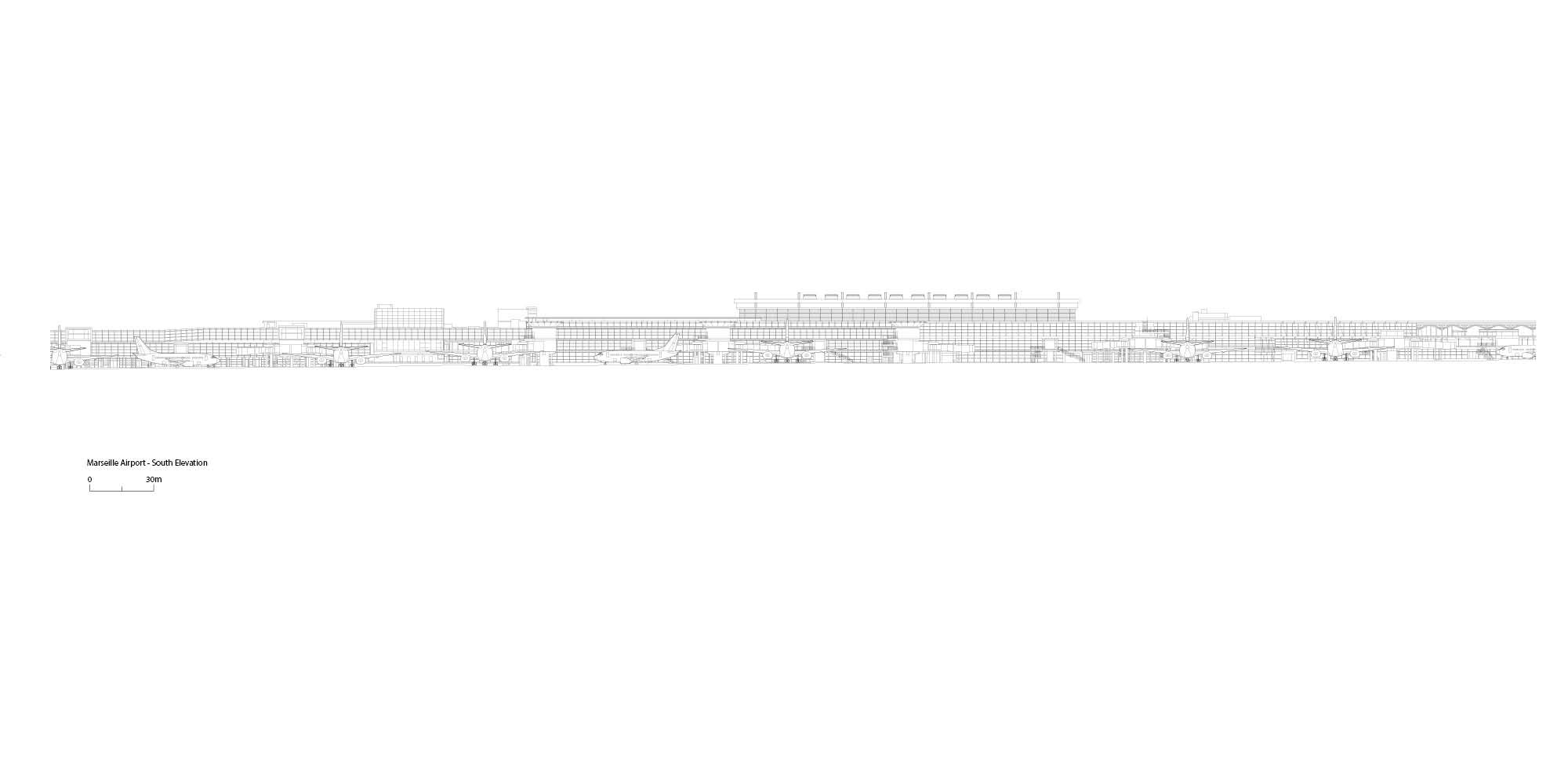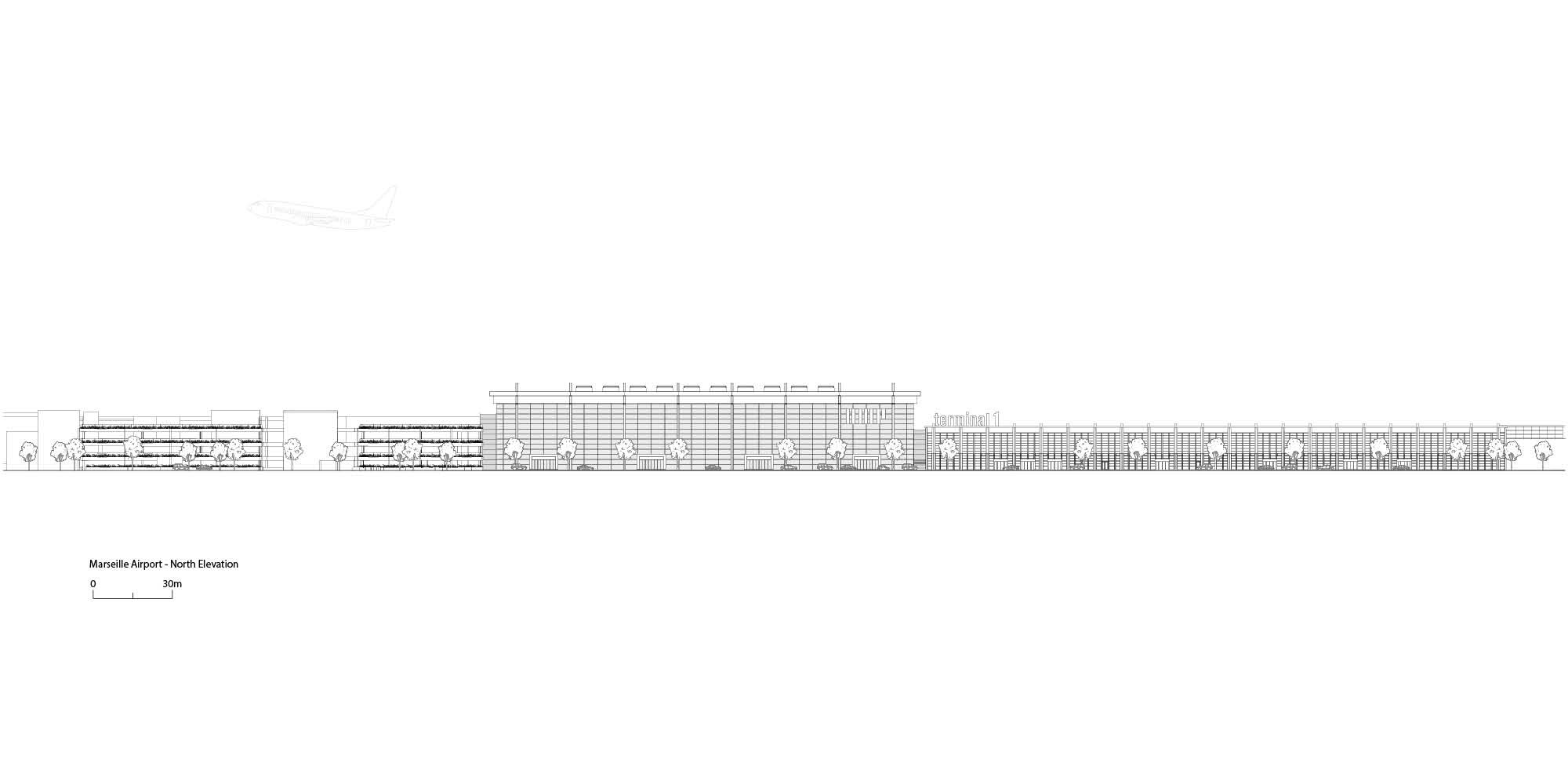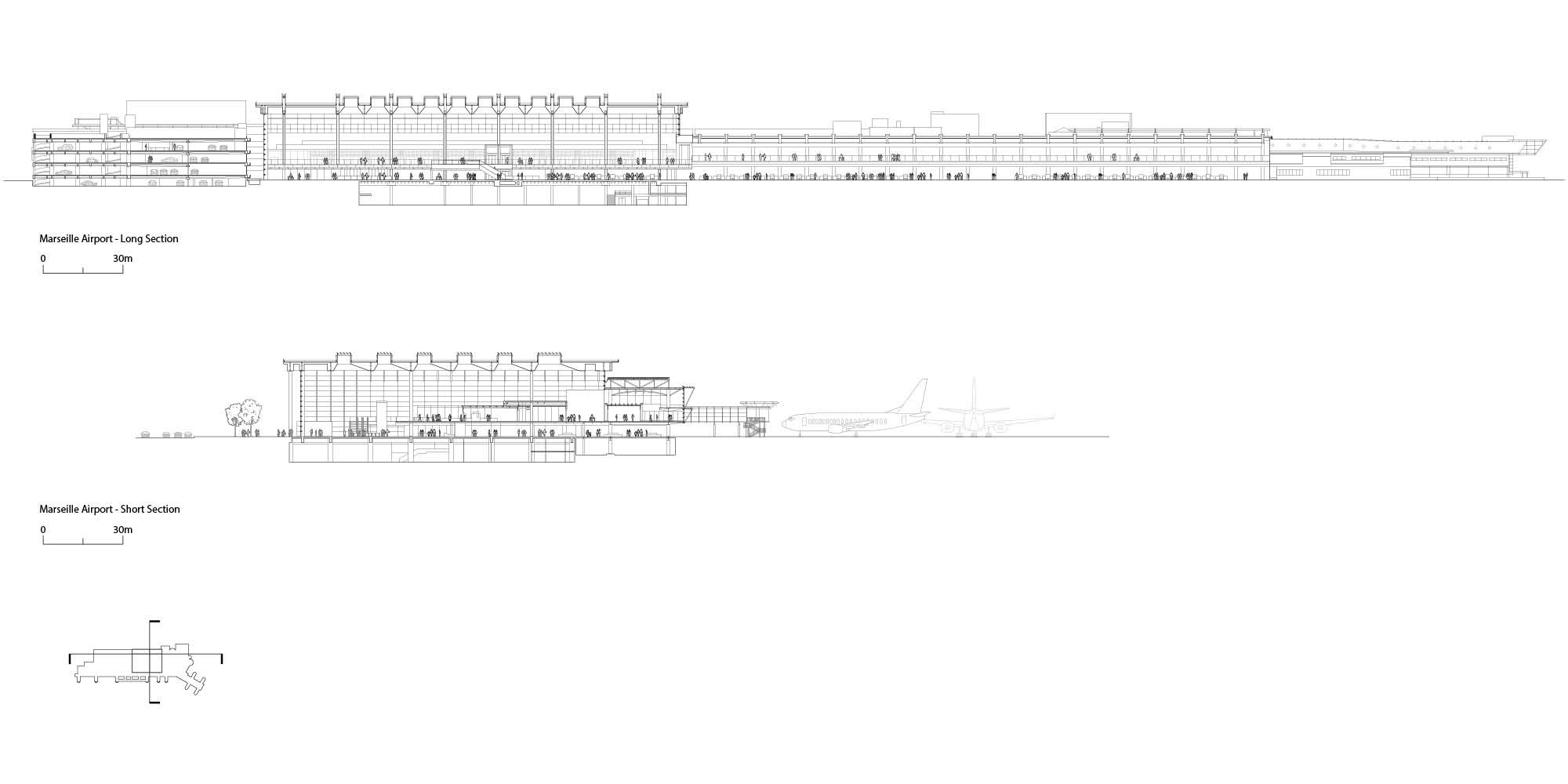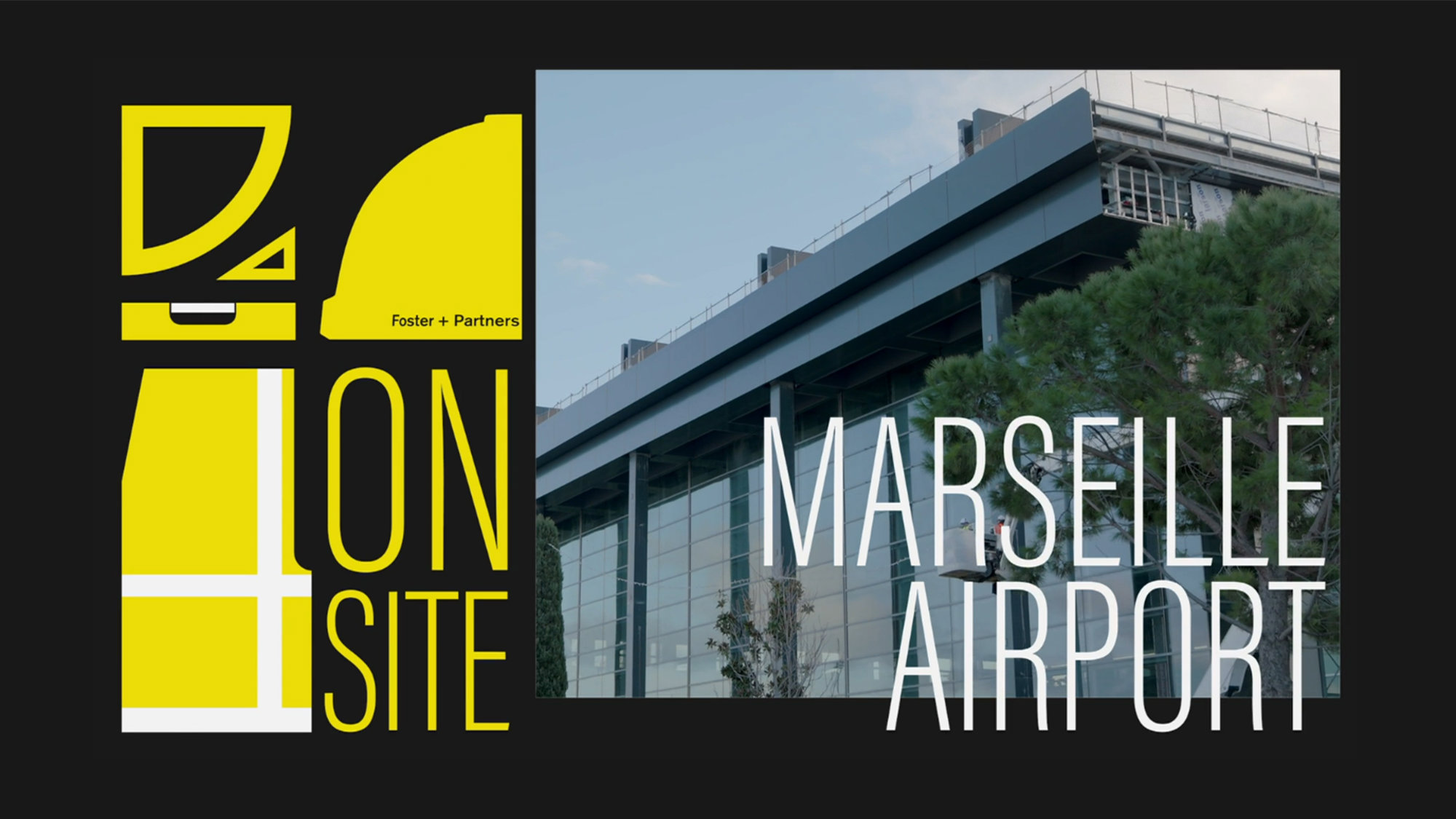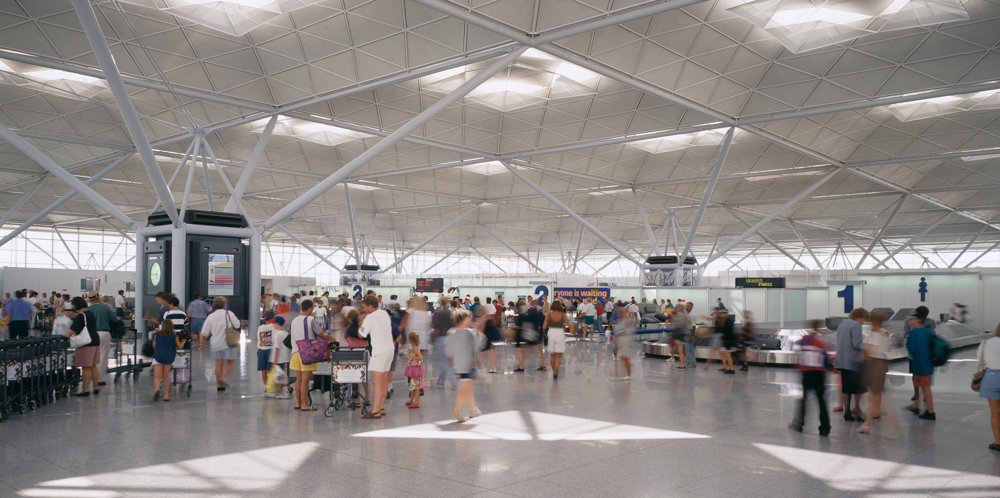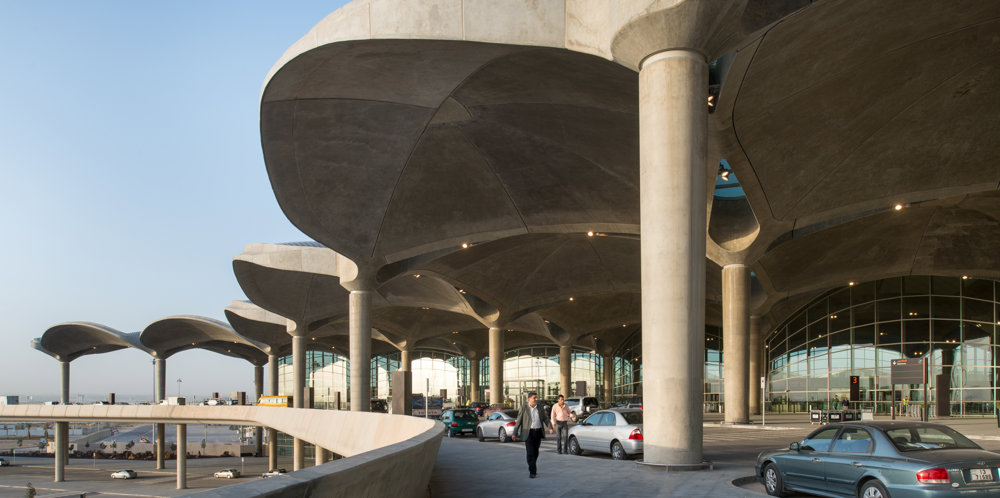The Marseille Provence Airport extension establishes an overall masterplan for the future by restoring the clarity of Fernand Pouillon’s original 1960s terminal and Richard Rogers' airside development. Foster + Partners’ design significantly improves the travel experience by reorganising passenger flows through a set of simple, bright, and easy to navigate spaces. It features a new Coeur – heart in French – that rationalises arrival and departure sequences within a single building, creating an intuitive progression through the terminal for passengers.
Made from 70% recycled steel, the Coeur is a 22-metre-high glazed hall whose structural expression echoes that of the Pouillon building. It features an inverted beam roof, heroic 33-metre-deep span and a continuous grid of glass skylights. Clad in polished aluminium, the skylights act like giant lanterns, bringing natural light deep into the building and allowing for natural ventilation, significantly reducing the use of cooling. Glass facades provide maximum transparency and create visual connections with the landscaped parvis, which brings a sense of calm and relaxation to the space.
The movement of passengers from landside to airside and vice versa follows a simple linear diagram. All departing passengers pass through a security screening area on the first floor, which is covered by a French timber canopy and overlooks the arrivals level below. Passengers are immediately transported into a large double-height space animated by shops and restaurants. Tranquil seating areas provide clear views of the aircraft and landing bays. Retail pods in the lounge areas are also made from French timber and reference Foster + Partners’ boat houses at Marseille Vieux Port.
The roof of the Coeur floats above the existing 1990s building, creating a shared architectural expression for the airport. The interfaces between the old and new buildings are clearly articulated, using a distinctive portal frame throughout the building.
Due to its modularity and seamless integration within the existing terminal, the design of the Coeur has proved to be inherently flexible. As such, it was able to incorporate design changes following the Covid-19 pandemic with minimal adjustments. Its clarity, simplicity and ability to evolve have been retained and emphasised, including the overall envelope of the building and the environmental strategy. These alterations have created opportunities to further reduce the carbon footprint of the terminal by 15 percent. This reduction, coupled with the fact that the project reuses existing buildings, minimises the project’s carbon footprint even further.









